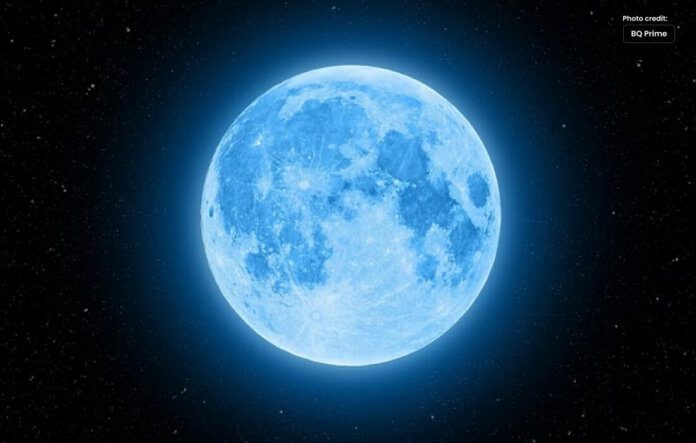Once in a blue moon tonight: rare celestial event up in sky August 30.
The ‘Super Moon’ phenomenon, which causes the blue moon to look slightly bigger and brighter, adds to the event’s intrigue. The moon’s close approach to Saturn adds to the significance of the occasion.
When the full moon orbit puts it close to Earth during its elliptical route around our planet, this is known as a “Super Moon.” At its farthest point, the moon stands roughly 405,500 KM away known as apogee.
The moon will appear larger than usual since it will be the largest of the four super moons that will occur this year and will be located 357,344 kilometers away from Earth.
Furthermore, the term “blue moon” has nothing to do with the color of the moon and instead describes the occurrence of two full moons in a single calendar month.
On average, a full blue moon occurs every 2.7 years. It won’t, though, because it happens even less frequently and won’t appear blue.
What is a “Blue Moon”?
Blue moons come in two different varieties. A seasonal blue moon, as defined by NASA, is the third full moon during a season of four full moons.
The second full moon that occurs inside a calendar month is referred to as a monthly blue moon. This term was created as a result of a misunderstanding of the original definition.
The Moon goes through each phase in 29.5 days, making a total of 12 full cycles in 354 days. Only every two and a half years does the 13th full moon occur because there are only about 366 days in a year. A “blue moon” is the name given to an extra full moon.
A blue moon occurs only sometimes. A full moon happens every 29 days on average. As most months have 30 or 31 days, a month may occasionally have two full moons.
The average frequency of blue moons is once every two and a half years. Unusually, there were two blue moons in 2018 that were separated by barely two months, one of which was a lunar eclipse.
A blue moon and a super moon will occur on the same night once more between January and March of 2037, which is another 14 years from now. This occurrence occurs around every 10 years.




